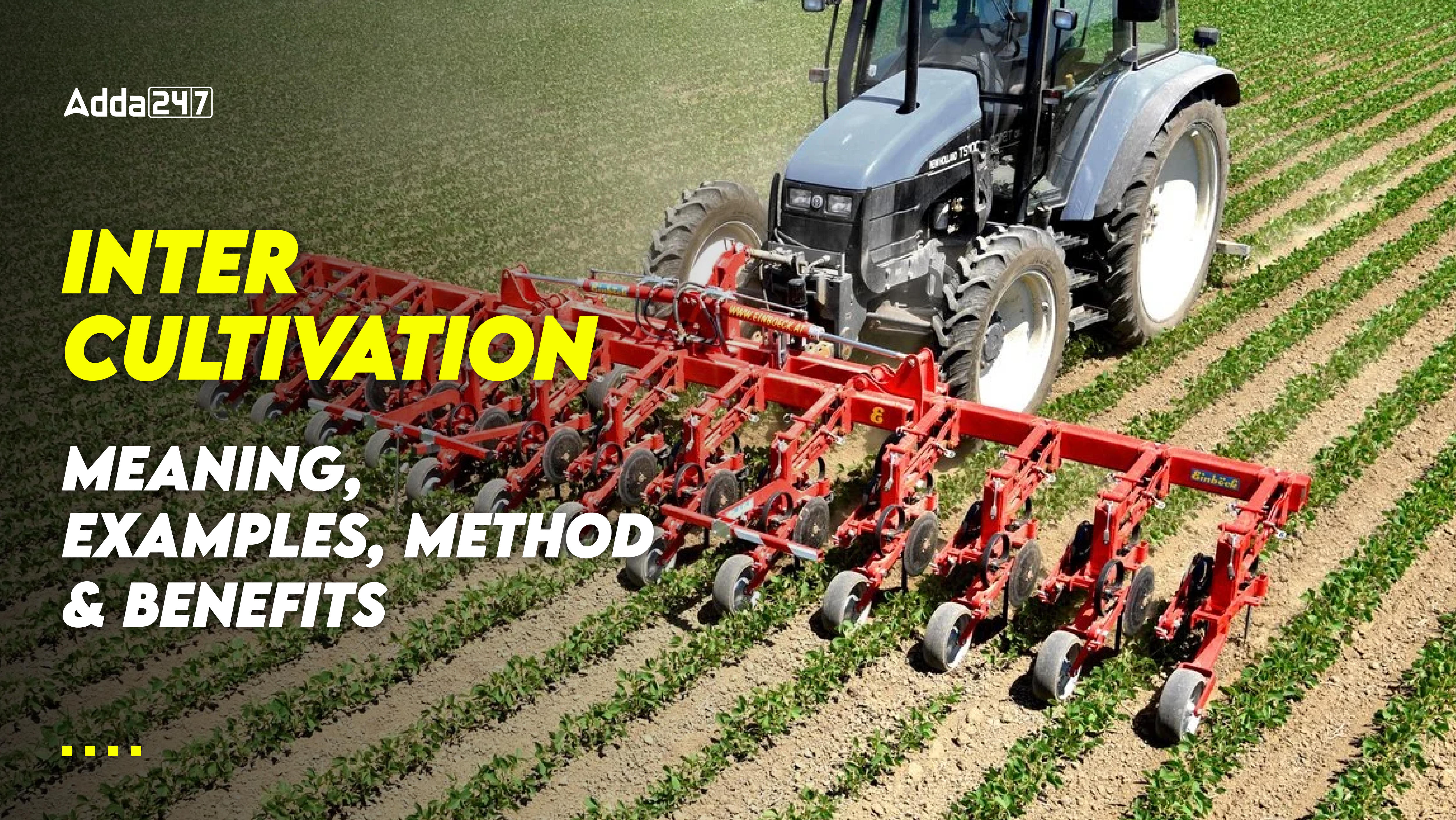Inter-cultivation in agriculture represents an important phase that occurs following the initial sowing of crops. Known also as after-cultivation or after operations, this stage encompasses a series of essential practices aimed at directly shaping the growth, yield, and overall health of cultivated plants. These inter-cultivation processes play a critical role in maintaining optimal conditions for crops by managing weeds, ensuring proper spacing through thinning and gap filling, and enhancing soil structure and nutrient availability. Here, let’s learn about the three primary inter-cultivation processes:
Thinning and Gap Filling
Thinning and gap-filling are crucial processes aimed at achieving optimal plant population and maximizing space utilization.
Thinning
- Thinning is the removal of excess plants leaving healthy seedlings. After seeds germinate and seedlings emerge, thinning involves selectively removing excess seedlings to maintain an ideal spacing between plants.
- This ensures that each plant has sufficient access to nutrients, sunlight, and water, which are crucial for robust growth and development. Thinning is typically conducted within a few weeks after initial sowing, allowing stronger seedlings to thrive without competition.
Gap Filling
- Gap filling is done to fill the gaps by sowing seeds or transplanting seedlings in gaps where early sown seeds had not germinated. It is a simultaneous process.
- Occasionally, after initial sowing, some areas within crop rows may not germinate uniformly, leaving gaps. Gap filling involves either sowing additional seeds or transplanting seedlings into these gaps to maximize the use of available space.
- By promptly filling these gaps, farmers ensure that every part of the field contributes to the overall crop yield, enhancing productivity and uniformity.
Normally, these are practiced a week after sowing to a maximum of 15 days. In dryland agriculture, gap-filling is done first. Seeds are dibbled after 7 days of sowing. Thinning is done after gap filling; to avoid drought. It is a management strategy to remove a portion of the plant population to mitigate stress is referred to as the mid-season correction.
Benefits:
- Enhanced Growth: Allows each plant to access adequate resources, promoting robust growth and development.
- Uniformity: Ensures even distribution of plants, leading to consistent crop maturity and higher yields.
- Reduced Competition: Minimizes competition among plants for nutrients, water, and sunlight, thereby reducing stress and improving crop health.
Weeding and Hoeing
Weeding and hoeing constitute fundamental measures in weed management and soil maintenance.
Weeding
- It entails the removal of unwanted plants, commonly referred to as weeds, which compete with crops for resources and hinder their growth.
- Effective weed control not only preserves crop health but also minimizes yield losses caused by weed-induced nutrient depletion and shading.
Hoeing
- This, on the other hand, involves the mechanical loosening of soil around crop plants. This process serves multiple purposes, including breaking up compacted soil, improving soil aeration, and disrupting weed growth.
- By loosening the soil, hoeing promotes better root penetration and nutrient absorption by crop plants, thereby supporting vigorous growth and development.
Benefits
- Improved Nutrient Availability: Enhances nutrient uptake by crop plants by aerating the soil and reducing nutrient competition from weeds.
- Weed Control: Suppresses weed growth, reducing competition for resources and minimizing yield losses.
- Soil Health: Promotes soil structure and fertility by reducing compaction and improving drainage.
Earthing Up
Earthing up, also known as hilling, is a specialized technique primarily employed for crops that benefit from additional soil around their base. This practice involves forming small mounds or ridges of soil around the plant stems.
- Crops such as potatoes, for instance, derive significant benefits from earthing up as it helps stabilize the plants, protecting tubers from light exposure, and promoting healthy root development.
- Furthermore, earthing up plays a crucial role in improving water drainage and moisture retention around the plant roots, particularly in regions prone to heavy rainfall or excessive irrigation.
- By creating a raised bed of soil, farmers can effectively manage water distribution, reduce erosion, and enhance overall crop resilience to adverse weather conditions.
Benefits
- Tuber Protection: Shields developing tubers from sunlight exposure, improving their quality and reducing greening.
- Moisture Management: Enhances water drainage and retention, maintaining optimal soil moisture levels for plant growth.
- Stability and Support: Provides support to sprawling plants, reducing the risk of lodging and improving overall plant stability.
Other Inter-Cultivation Practices
In addition to the primary practices mentioned above, several other inter-cultivation techniques are employed to optimize crop growth and yield:
- Harrowing: The process of stirring or scraping the soil surface between crop rows to break up clods, create a fine seedbed, and control weeds.
- Roguing: Removing off-type or undesirable plants from the field, ensuring crop purity, and preventing the spread of diseases.
- Topping: Removing terminal buds from certain crops to stimulate lateral growth and improve overall plant structure and yield potential.
- Propping: Providing support to tall or heavy crops like sugarcane to prevent lodging (plants falling over) and maintain upright growth.
- De-trashing: Removing older leaves and debris from crops such as sugarcane to improve airflow, reduce disease pressure, and enhance overall plant vigor.
- De-suckering: Removing unnecessary shoots or suckers from plants like tobacco to direct more nutrients and resources towards main crop production, improving quality and yield.
Each of these inter-cultivation practices plays a vital role in managing crop health, optimizing resource utilization, and ultimately ensuring a successful harvest. Farmers adapt these practices based on crop type, growth stage, and local environmental conditions to achieve the best possible outcomes in agricultural production.




 RRB Paramedical Admit Card 2025 Out, Che...
RRB Paramedical Admit Card 2025 Out, Che...
 KGMU Nursing Officer Recruitment 2025, A...
KGMU Nursing Officer Recruitment 2025, A...
 Punjab Police Constable Exam Date 2025, ...
Punjab Police Constable Exam Date 2025, ...


 Adda247 Job portal has complete information about all Sarkari Jobs and Naukri Alerts, its latest recruitment notifications, from all state and national level jobs and their updates.
Adda247 Job portal has complete information about all Sarkari Jobs and Naukri Alerts, its latest recruitment notifications, from all state and national level jobs and their updates.